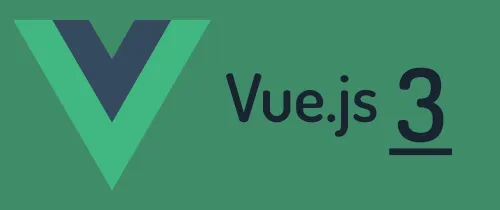In the dynamic landscape of web development, crafting user-friendly forms that ensure data accuracy is crucial. Vue 3, with its powerful reactivity and component-based architecture, offers developers the tools to create interactive and robust web applications. A key aspect of form validation is email validation, ensuring that users provide valid email addresses. In this extensive guide, I, as an expert in Vue 3 and web development, will be your guide into the intricacies of Vue 3 Email Validation. We will delve into the significance of email validation, regex patterns, error handling, and best practices, all aimed at enhancing user experiences and maintaining data integrity.
The Significance of Email Validation
Email validation is more than just a technical requirement; it is a fundamental component of web forms for several reasons:
1. Data Integrity: Email validation ensures that the data collected is accurate, structured, and error-free, reducing inconsistencies in your database.
2. User Experience: Providing real-time feedback to users regarding invalid email inputs enhances their experience by preventing submission errors.
3. Security: Proper email validation can help safeguard your application against malicious inputs and potential vulnerabilities.
4. Communication Efficiency: Accurate email addresses improve the efficiency of communication with users through email-based notifications or updates.
Setting Up Vue 3
Before diving into email validation in Vue 3, let's briefly touch upon the basics of setting up a Vue 3 project:
1. Installation: Start by installing Vue 3 using Vue CLI or directly via a script tag.
2. Vue Components: Vue 3 revolves around components, which encapsulate the functionality and appearance of various elements on your webpage.
3. Vue Router: If your project requires routing, Vue Router is the official routing library for Vue.js.
4. VueX: For state management, VueX is used to manage global states in your Vue 3 application.
Implementing Email Validation
Implementing email validation in Vue 3 is a step-by-step process that involves both the template and script sections of your component:
1. Template: In your component's template, bind the input field's value to a data property and utilize Vue's built-in directives like v-model for two-way data binding.
2. Script: In the script section, define the data property where you store the email input, and create a method to handle email validation.
3. Regular Expression Validation: Utilize JavaScript's built-in regex patterns or create custom patterns to match valid email formats.
4. Error Handling: Display error messages to users when the email input doesn't meet the validation criteria. You can use conditional rendering and v-if directives for this.
5. Styling for User Feedback: Enhance the user experience by applying CSS styles to highlight invalid input fields.
6. Form Submission: Ensure that the form submission is disabled until the email input meets the validation criteria.
Writing Email Validation Regex Patterns
While Vue 3 provides a framework for email validation, you may want to create custom validation rules using regular expressions. Here's an example of an email validation regex pattern in JavaScript:
const emailPattern = /^[a-zA-Z0-9._%+-]+@[a-zA-Z0-9.-]+\.[a-zA-Z]{2,4}$/;
You can integrate this regex pattern into your Vue 3 component for custom email validation.
Best Practices for Vue 3 Email Validation
To ensure effective email validation in Vue 3, consider the following best practices:
1. Use Built-in Directives: Vue 3 provides directives like v-model for efficient two-way data binding. Leverage them for form controls, including email inputs.
2. Customize Error Messages: Create clear and user-friendly error messages to help users understand and rectify their input mistakes.
3. Regular Expression Validation: Implement custom email validation using regex patterns when specific or stricter rules are required.
4. Real-time Feedback: Provide real-time validation feedback, such as indicating invalid input as the user types.
5. Accessibility: Ensure that your error messages are accessible to all users, including those who rely on screen readers.
Frequently Asked Questions
1. Can I use Vue 3 in my existing Vue 2 project?
While Vue 3 is not backward-compatible with Vue 2, you can migrate your Vue 2 project to Vue 3 with the official migration guide.
2. What's the difference between Vue 3 and Vue 2?
Vue 3 introduces significant improvements in terms of performance, reactivity, and the Composition API. It's designed to be more efficient and flexible than Vue 2.
3. Is server-side validation necessary along with client-side email validation?
Yes, implementing server-side validation is crucial for security. Client-side validation can be bypassed, making server-side validation a necessary layer of defense.
4. Can I use Vue 3 with popular CSS frameworks like Bootstrap or Tailwind CSS?
Yes, Vue 3 can be integrated with popular CSS frameworks to enhance your project's styling and responsiveness.
5. Are there Vue 3 libraries for advanced form validation?
Yes, Vue 3 offers various libraries and plugins for advanced form validation, including Vuelidate and VeeValidate.
In conclusion, mastering email validation in Vue 3 is essential for building user-friendly and data-integrity-focused web applications. By following the principles and best practices outlined in this comprehensive guide, you can ensure data accuracy, enhance user experiences, and build trust with your users. Stay updated with the latest developments in Vue 3 and web development to keep your forms at the forefront of user interactions.



